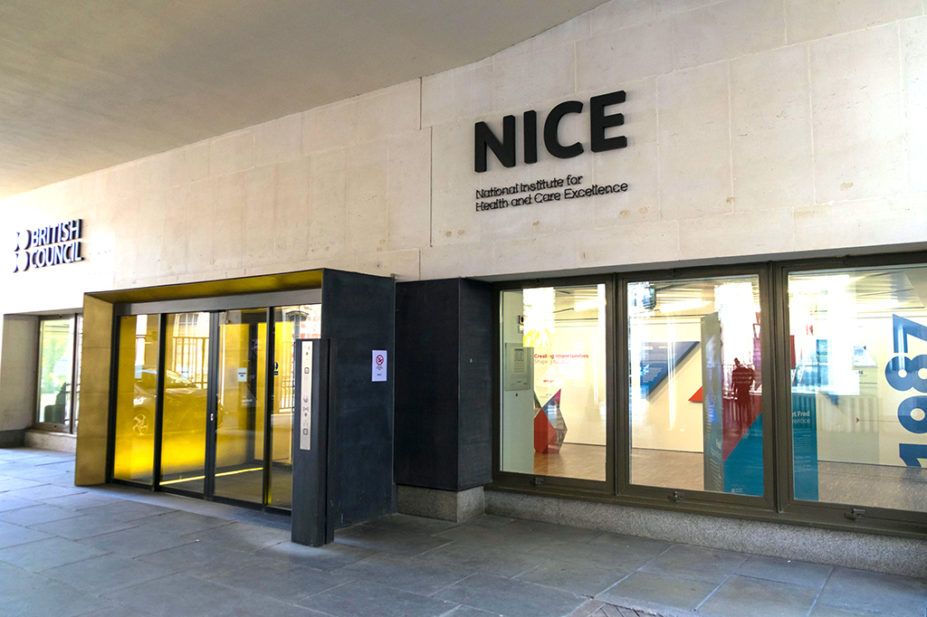
Alamy Stock Photo
The latest guidance from the National Institute for Health and Care Excellence (NICE) marks a step-change in the assessment and management of chronic pain conditions.
For the first time, the guideline divides chronic pain into two different pathways: one with an identifiable underlying cause, and one without.
The latter has been termed “chronic primary pain”, and includes conditions such as fibromyalgia, some types of headaches or musculoskeletal pain, and complex regional pain syndrome. Although the prevalence of chronic primary pain is currently unknown, NICE estimates it to be 1–6% of the population in England.
This new definition comes from the World Health Organization’s 11th revision of its diagnostic tool, the International Statistical Classification of Diseases and Related Health Problems (ICD-11), and is defined as pain that persists for three months or more but has no clear underlying condition, or that appears to be out of proportion to any observable injury or disease.
“[The NICE chronic pain guideline is] almost a guideline by exclusion,” explains Cathy Stannard, a pain consultant in Gloucestershire and clinical lead on the NICE chronic pain guideline committee.
“You take out all the other things; the osteoarthritis guideline, the rheumatoid arthritis guideline, the low back pain guideline and the headache guidelines, and you’re left with what broadly accords with how the ICD-11 describe chronic primary pain,” she adds.
“The boundaries of chronic primary pain are fluid; they may change with understanding… but what we’re trying to do is describe a population where the pain or its impact is out of proportion to an obvious underlying disease; that’s the core of it.”
The new NICE guidance states that prescribers should consider off-label use of antidepressants, as well as exercise and psychological therapy, for the treatment of chronic primary pain in adults, but recommends against the initiation of opioids, paracetamol and non-steroidal anti-inflammatory drugs for those patients (see Box).
In cases where patients are already taking these medications, the guideline states a review must be carried out with the patient to make a shared decision about whether to continue them or not.
The recommendations have stimulated an emotive debate among pain experts, and patients alike, some of whom have concerns that the guidelines could adversely affect patient care.
Among the loudest dissenting voices are the Faculty of Pain Medicine (FPM) of the Royal College of Anaesthetists, and the British Pain Society (BPS).
In its published response to the final guideline, the FPM expressed concern that the way in which the ICD-11 classification had been used in the guideline did not reflect clinical practice or the current research base.
“The guidelines state chronic primary pain has no clear underlying condition and that the mechanisms underlying it are only partially understood,” the FPM response read.
It added that there was a risk that those diagnosed with chronic primary pain would include large numbers of people with a “different, ultimately identifiable cause of pain”, to whom the guidance does not apply.
Other organisations shared a concern that there was a lack of clarity over the difference between chronic pain and chronic primary pain when NICE published a draft version of the guidance in August 2020. But revisions in the final guideline had a positive reception from the likes of the Royal Pharmaceutical Society (RPS) and the Royal College of General Practitioners (RCGP).
The RPS said it was “particularly pleased” that the guideline has clarified the definition of chronic primary pain and that it has been clearly outlined that chronic primary pain can coexist with secondary pain.
It said it believed this was “vitally important in ensuring all patients with chronic pain, including those with a known source of their pain, can be managed effectively and offered analgesics as appropriate”.
However, NICE’s recommendations around the pharmacological management of chronic primary pain have led the FPM to voice serious concerns that the guidelines – particularly the recommendations to not initiate analgesia – could lead to patients being denied the very medicines they rely on.
Lee Wilson, a consultant pharmacist at Doncaster and Bassetlaw NHS Trust, and chair of the UK Primary Care Association pain committee, says: “Any withdrawal of ineffective therapies should be done in consultation with the patient.”
He adds: “I share some of the fears that the guidance will be misinterpreted as ‘Immediately stop all Do Not Do meds’ but this is not what the guidance states.”
Stannard insists that the guidance is not about “taking people off medicines”, and says she appreciates that prescribers often feel pressured to treat when faced with a patient in pain.
“When patients are telling their stories of agony, it really strikes a chord … but this whole idea of ‘You must respond’ is what has got prescribers in so much trouble; the compassionate response is to first do no harm.”
Decommissioning of services
The FPM also expressed the concern that “misinterpretation” of the guideline could result in secondary pain services no longer being commissioned, and that there was a risk that pain management programmes — which help people to live with chronic pain by teaching them ways of dealing with the disabling effects and distress caused by being in pain — could be decommissioned because they are not expressly recommended in the guidance.
However, Stannard explains that, in recent years, there has been “mounting” evidence that the treatments offered by pain services are simply not supported by evidence. As a result, the move towards community-based services, which is also laid out in the NHS long-term plan, ultimately represents “an existential threat to specialist pain services”.
“The problem is that pain services have never been able to demonstrate good outcomes or value for money, they just never have,” says Stannard.
Of course, service commissioners do not only look to NICE guidance when making decisions on what services to provide. As explained further in the NICE committee’s written response to the FPM: “Services to support the management of chronic pain, including chronic primary pain, would usually be commissioned if providers demonstrate that the treatment options they offer are supported by evidence and they can provide long-term patient outcomes to demonstrate this.”
Wilson points out that although NICE does not recommend the use of pain management programmes, it does individually support many of the components of most existing pain management programmes, such as supporting patients to be more active within a psychological framework, and providing education to patients to self-manage their own pain.
However, in its response to the guidance, the RCGP pointed out that access to physical and psychological therapies for pain at a community level is currently “patchy” and that this needed to be “addressed urgently” if the new guidelines were to make a “genuine difference” to the lives of patients with chronic primary pain.
And data obtained by The Pharmaceutical Journal in 2019 show current waiting times for specialist pain services vary hugely across Great Britain, with some patients waiting years to access the treatment they urgently need.
According to Stannard, NHS England and NICE have been in discussion about the implications of the guideline for the commissioning of services in the context of existing initiatives, including the NHS long-term plan, although further details have yet to be confirmed around this.
Emotive discussions
Although it has led to some difficult and emotive discussions, the guideline has successfully pushed the topic of chronic pain, and more specifically, chronic primary pain, front and centre.
“The last thing I want to say is that people shouldn’t challenge this guideline. Of course it should be challenged,” says Stannard.
“But I also think we should be challenging standards of care all the time. I was pleased when the NICE analyses threw up evidence that was contrary to my current perceptions — I thought ‘Great, right, I’m going to stop doing that then’.”
In its statement responding to the FPM, NICE said it agreed with the view that the guidance does not override the individual responsibility of healthcare professionals to make decisions appropriate to the circumstances of the individual patient, in consultation with the patient, their guardian or carer.
“We hope that this guidance can help support more people to receive appropriate care,” NICE added.
Box: Recommendations for managing chronic primary pain
Non-pharmacological management
- Offer supervised group exercise programmes and encourage people to remain physically active;
- Consider acceptance and commitment therapy or cognitive behavioural therapy delivered by healthcare professionals (HCPs) with appropriate training;
- Do not offer biofeedback;
- Consider single course of acupuncture or dry needling, but only if delivered in community setting by a band 7 (equivalent or lower) HCP with appropriate training, for no more than five hours, or delivered by another HCP with appropriate training and/or in another setting for equivalent or lower cost;
- Do not offer transcutaneous electrical nerve, ultrasound or interferential therapy.
Pharmacological management
- Consider an antidepressant – either amitriptyline, citalopram, duloxetine, fluoxetine, paroxetine or sertraline – for people aged 18 years and over to manage chronic primary pain, after a full discussion of the benefits and harms (seek specialist advice if being considered for young people aged 16-17 years);
- Do not initiate any of the following medicines to manage chronic primary pain in people aged 16 years and over: antiepileptic drugs, including gabapentinoids; antipsychotic drugs; benzodiazepines; corticosteroid trigger point injections; ketamine; local anaesthetics (topical or intravenous); local anaesthetic/corticosteroid combination trigger point injections; non-steroidal anti-inflammatory drugs; opioids; paracetamol;
- If a person with chronic primary pain is already taking any of the medicines in the above recommendation, review the prescribing as part of shared decision making.
Source: National Institute for Health and Care Excellence


